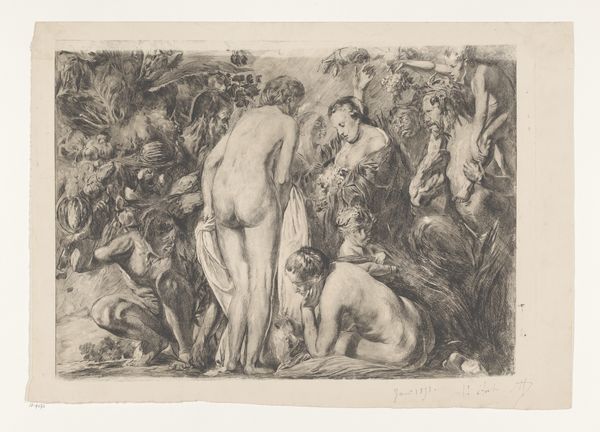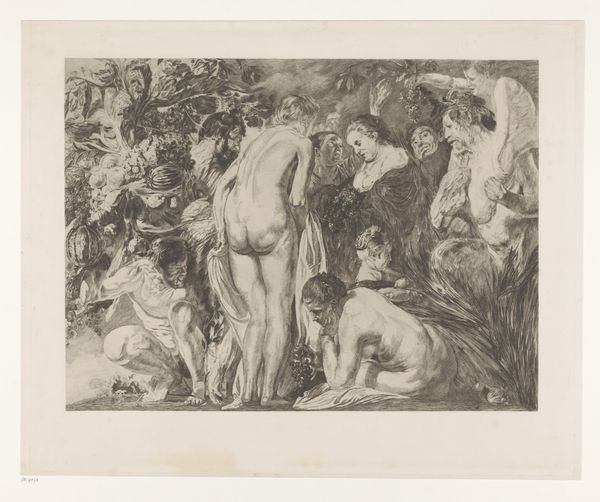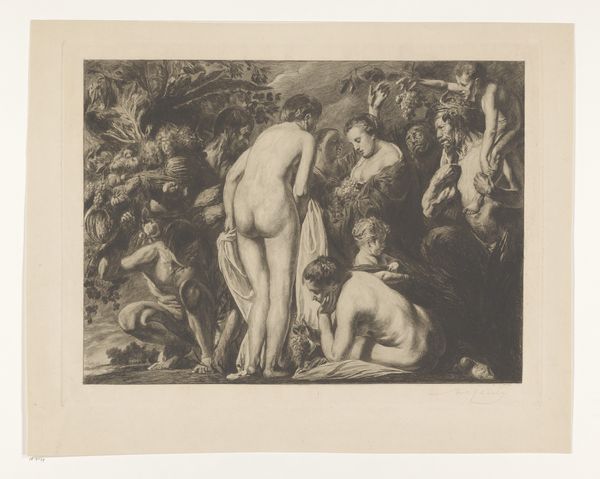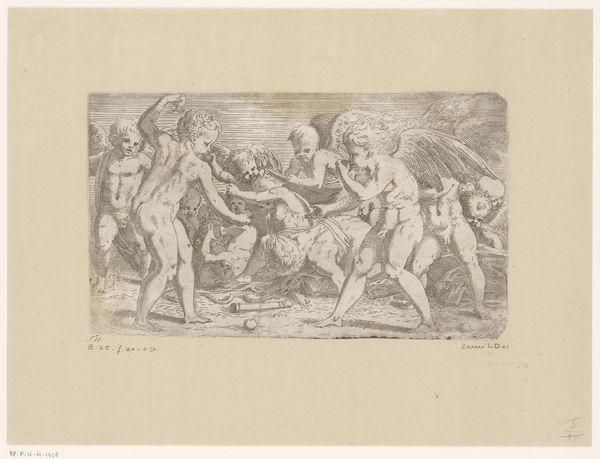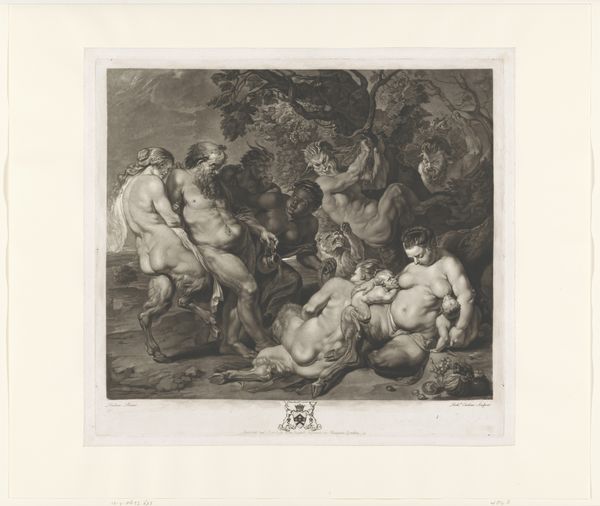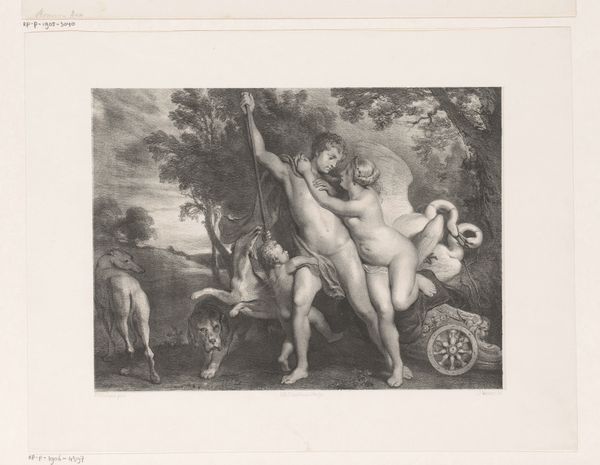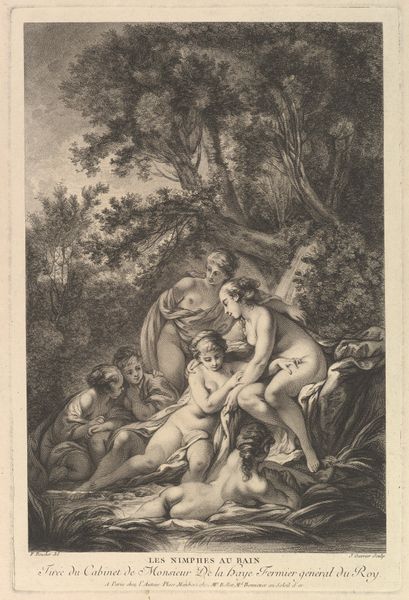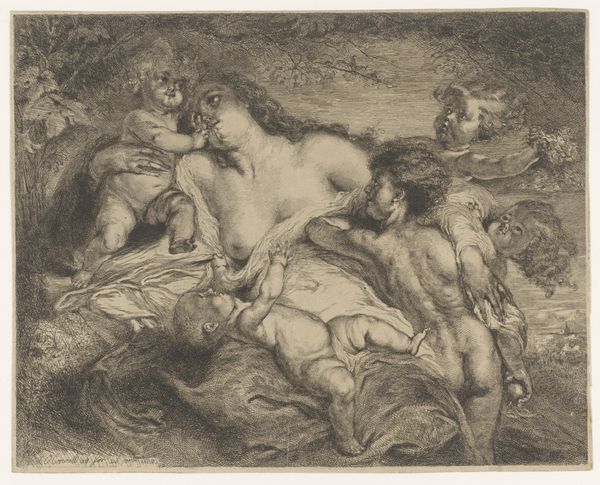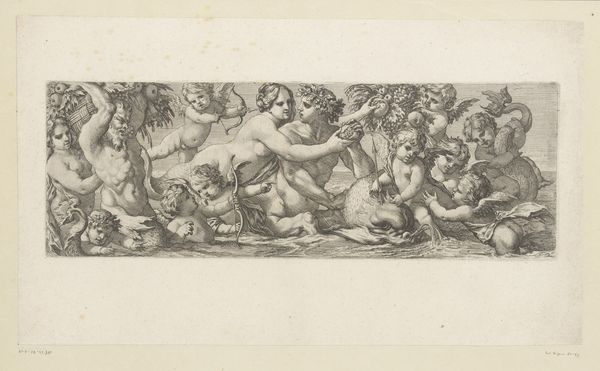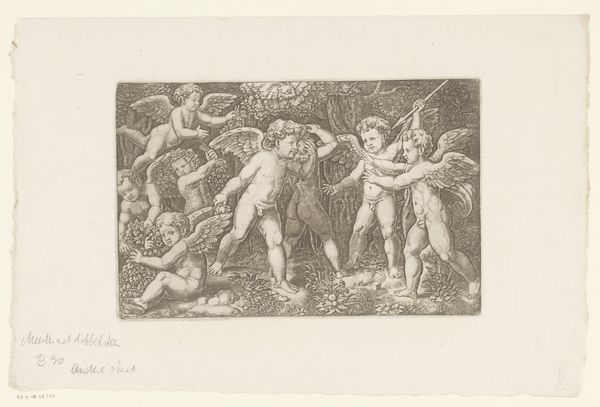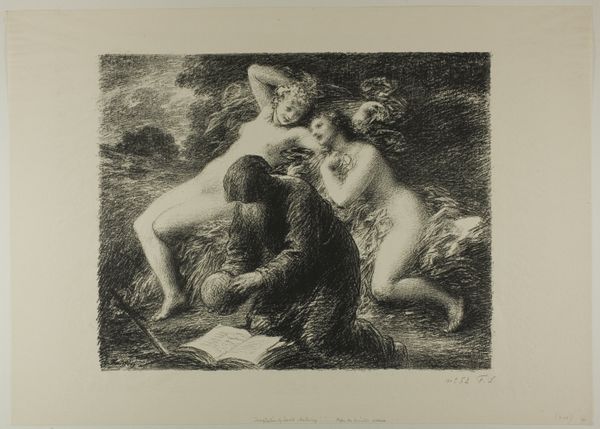
#
pencil drawn
#
photo of handprinted image
#
light pencil work
#
ink paper printed
#
parchment
#
pencil sketch
#
light coloured
#
old engraving style
#
limited contrast and shading
#
warm natural lighting
Dimensions: height 174 mm, width 258 mm
Copyright: Rijks Museum: Open Domain
Franz Xaver Wagenschön created this print of Neptune and Amphitrite in 1724, deploying the etching process. Here, a metal plate would have been coated in wax, then drawn into with a fine needle, before being submerged in an acid bath. The incised lines would then bite into the metal, creating the basis for the print we see. Look closely, and you can see the almost frantic quality of the marks, which lend the scene its dynamism. The relatively small scale of the composition intensifies this effect. The etching process, while laborious, allowed artists to disseminate their ideas widely, playing an important role in the development of visual culture. The artist is not so much a singular genius, but instead plays a crucial role in a complex system of production and consumption. Consider the amount of work involved in the production process, as well as the skilled traditions the artist engaged with. The artist here is part of a much wider system, and we must understand that system to understand the artist.
Comments
No comments
Be the first to comment and join the conversation on the ultimate creative platform.
